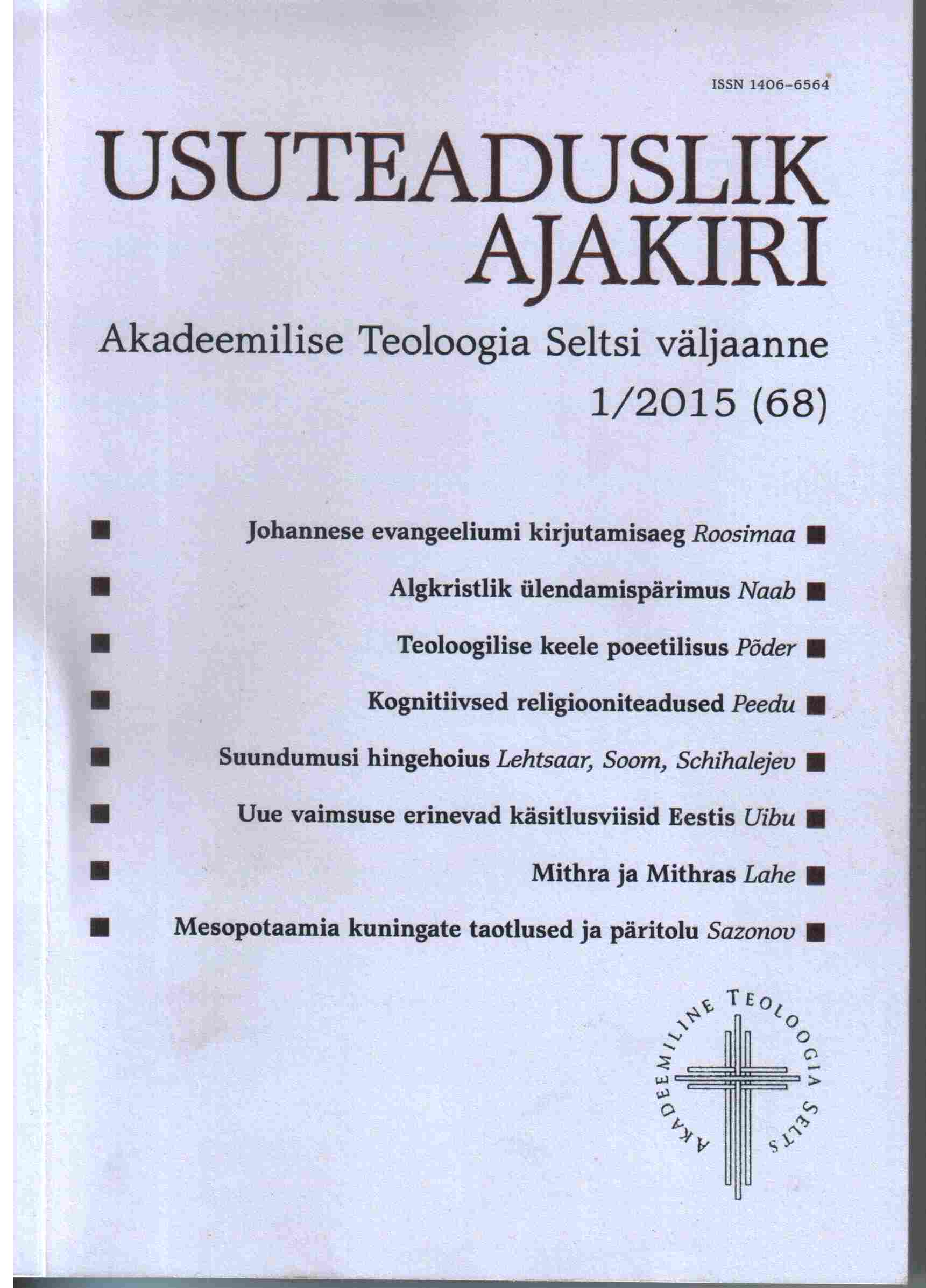Mithra ja Mithras: küsimus Iraani ja Väike-Aasia Mithra kultuse ning Rooma Mithrase kultuse omavahelistest seostest ja Rooma Mithrase kultuse päritolust.
Mithra and Mithras: the Question of the Relationship between the Cult of Mithra in Iran and Asia Minor and the Cult of Mithras of Rome and the Origins of the Roman Cult of Mithras
Author(s): Jaan LaheSubject(s): Christian Theology and Religion, History, Cultural history, Ancient World, Theology and Religion, Comparative Studies of Religion, Sociology of Religion
Published by: Akadeemiline Teoloogia Selts
Keywords: Ancient Near-East Studies;History of Religions;
Summary/Abstract: The cult of Mithras was one of the so-called oriental cults that were spreading during the first four centuries AD in the Roman Empire. The cult spread from Spain and Britain to Asia Minor, Syria and Egypt, leaving behind a notable number of extant monuments – more than 1,000 epigraphs, 700 reliefs depicting the god Mithras and more than 500 other reliefs. While the cult first began to spread at the end of the 1st century AD, a deity named Mithras was already present in the epigraphs of the Achaemenids and in the Avesta and was also worshipped in Hellenic Asia Minor before t he area was absorbed by the Roman Empire. Up to the present day, one of the key questions in researching the Roman cult of Mithras has been the relationship of Mithras to the god Mithra worshipped in Iran and Hellenic Asia Minor. The autor of this article analyses the points of contact between the Roman Mithras and the cult of Mithra of Persia and Asia Minor to answer the question of how to interpret the relationship between these gods and cults. The author arrives at the conclusion that while the Iranian cult of Mithra, the Hellenic cult of Mithra of Asia Minor and the Roman cult of Mithras share some common elements – the name of the god, its relationship to the Sun and commonalities in the case of Asia Minor and Rome, including a similarity in the way the god was depicted (in Persian clothes, with a halo around his head), there are still significant substantive differences between the cults, out of which the most notable are the absence of the definition of mystery and mystic features in the Roman cult of Mithras, as well as the absence of a depiction of the most important events (the birth of Mithras from a rock; Mithra slaying the bull; meal shared by Mithra and the god of the sun; Mithra and the god of the sun riding a carriage to heaven) in Iran and Asia Minor in the pre-Christian era. Based on these observations it can be said that the cult of Mithra of Iran and Asia Minor and the cult of Mithras of Rome should be regarded as separaate cults and not the local versions of a single “Religion of Mithra”. The Roman cult of Mithras has not grown out of the cult of Mithra of Asia Minor, but it is possible that the cult of Mithras which emerged in Rome has borrowed some elements from it, out of which some parts can be traced back to the ancient Persian religion or even the ancient religion of Indo-European tribes.
Journal: Usuteaduslik Ajakiri
- Issue Year: 2015
- Issue No: 1 (68)
- Page Range: 122-151
- Page Count: 30
- Language: Estonian

